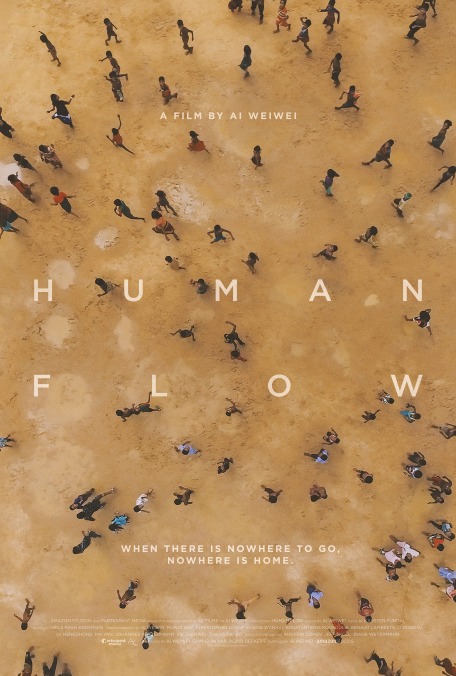Frequent documentary subject Ai Weiwei stepped behind the camera to make his own docu-essay Human Flow, spending years traveling the world to find images that illustrate our seemingly never-ending refugee crisis, which has lately become a political wedge issue in some countries—including the United States. As someone who’s moved all over the planet and has dealt with political oppression in his native China, Ai is deeply invested in the idea that ordinary people should have the right to reject oppressive and unstable regimes, to travel wherever they want, and to settle wherever they can. That’s the case he makes with Human Flow, which is split between intimate portraits of the displaced and despairing illustrations of how the system’s stacked against anyone compelled to leave home.
But because he’s a visual artist as well as an activist, Ai makes sure that his documentary is expressively cinematic—sometimes to a fault. There have been a number of gripping “you are there” films about refugees over the past few years, but Human Flow distinguishes itself from the pack with how handsome it looks. Eschewing narration and keeping interviews and fly-on-the-wall conversations to a minimum, Ai asks viewers to gaze intently at slow, gliding tracking and overhead shots, moving across the teeming masses of humanity and their makeshift new homes. Primarily through images, Ai captures how mini-societies form during the natural process of human migration, and he photographs the man-made structures meant both to house and to contain.
Ai’s approach occasionally tips too far toward aestheticizing a dire situation. He makes shanty towns and long slogs through the wilderness look so pretty that some viewers may be lulled. Even with the alarming newspaper headlines and statistical factoids that pop up on the screen periodically, the documentary at times feels removed from actual experiences. It’s clear that a fair amount of money and resources were directed toward the making of Human Flow. (According to the press notes, over 200 crew-members worked on it, in over 20 countries.) The heft of the production can be stifling.
It also works against Ai’s cause to some extent that in trying to tell the larger story of refugees, he doesn’t deliver any single compelling narrative. Human Flow features some some strong, heartbreaking testimonial anecdotes, but it skips around so much that the audience doesn’t really get the chance to know Ai’s subjects. The film needs more simple, off-the-cuff, humanizing moments like the one where a refugee pulls out her cellphone to show off her favorite pictures of cats wearing clothes. Those few seconds say more about how any one of us can end up displaced than all of Human Flow’s numbers and data points.
All of that said, what this movie lacks in relatable, down-to-earth drama, it makes up to a considerable degree with scope. By shooting in Europe, the Middle East, Asia, and the Americas, Ai gets across the vastness and variety of the current refugee problem. People around the globe are being driven out of their homes by everything from civil war to climate change, and they’re frequently landing in countries that don’t know what to do with them, in terms of educating their young or getting their adults paying work. Whatever the origin of any refugee group’s dilemma, the endpoint is often a purgatorial resettlement camp, where they’re fed and housed but have nothing to do—and no permission to leave.
If there’s a larger point, then, to Ai’s smooth, dynamic camerawork, maybe it’s to capture the deeper aspirations of these men, women, and children on the other end of the lens. In one of the film’s more dramatic scenes, Ai shoots near the U.S./Mexican border, and gets a polite but firm warning from a patrolman who tells him to stay on the American side, which is designated by a single wooden post. Through visuals alone, Ai asks a pertinent question: If our eyes can move freely across that line, why can’t our feet?







































![Rob Reiner's son booked for murder amid homicide investigation [Updated]](https://img.pastemagazine.com/wp-content/avuploads/2025/12/15131025/MixCollage-15-Dec-2025-01-10-PM-9121.jpg)

